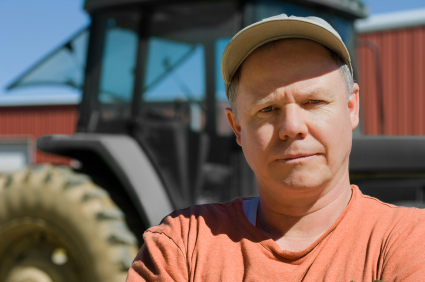 Marketing campaigns aside, the face of industrial-scale farming is male. Big Ag is big business — and big profits. And when anyone raises questions about the billions of tax dollars lavished on the largest industrial growers of corn, soybeans, and other commodity crops or points out the harm that these perverse incentives do to the environment, Big Ag’s lackeys lash out.
Marketing campaigns aside, the face of industrial-scale farming is male. Big Ag is big business — and big profits. And when anyone raises questions about the billions of tax dollars lavished on the largest industrial growers of corn, soybeans, and other commodity crops or points out the harm that these perverse incentives do to the environment, Big Ag’s lackeys lash out.
But bullying your critics and worried consumers is not always the best public relations strategy. Sometimes you need to cultivate the softer sell.
That must be why commodity growers’ lobbies have launched fresh campaigns aimed at polishing their tarnished reputation. How? By showcasing female farmers as the fresh, new faces in their public relations toolbox. The latest campaign by the National Corn Growers Association and the United Soybean Board is titled “Common Ground.”
According to the St. Louis Post-Dispatch, Common Ground “will attempt to put a more feminine, friendly and empathetic face on large-scale agriculture by using women farmers to appeal to suburban and urban grocery shoppers — most of whom are women themselves.” As the paper reported:
“We’re a unique voice because we’re also moms. We’re the ones getting the food on the table,” said Chris Wilson, president of American Agri-Women and lifelong farmer, who is originally from Illinois. “We make a good connection with consumers.”
But as usual, even the most cursory analysis of Big Ag’s PR claims shows that they obscure a very different reality. The Environmental Working Group (EWG) took a look at the board membership of five of the largest organizations representing corn, soybean, wheat, cotton, and rice growers. They also happen to be the five crops that together collect 90 percent of federal farm subsidies.
What we found is that female representation on these boards amounts to a staggeringly meager 1.3 percent. By comparison, women on the National Sustainable Agriculture Coalition’s (NSAC) Organizational Council actually outnumber men (55 percent).

The new $30 million public relations campaign by Big Ag groups would just as soon keep these numbers out of sight. We believe they deserve center-stage attention.
And since we’re keeping score, the leaders of all three national organic food and agriculture organizations are women: The Organic Center is lead by Joan Boykin, the Organic Trade Association is helmed by Christine Bushway, and Maureen Wilmot runs the show at the Organic Farming Research Foundation.
Looking deeper into the gender statistics around farming, the U.S. Department of Agriculture reports that women now operate 14 percent of the nation’s 2.2 million farms. More important, though, is how these women farm the land and conserve natural resources. The Organic Farming Research Foundation reports that 22 percent of organic farmers are women. They, and their fellow male organic farmers, follow practices that conserve soil and biological diversity by rotating crops and avoiding synthetic fertilizers, pesticides, hormones, and genetically modified seed.
The Foundation also notes that “women … are far more likely to allocate land to vegetables and herbs (male = 33 percent, female = 47 percent of acreage). They are likewise far less likely than men to devote land to field crops (male = 44 percent, female = 28 percent of acreage).” Women are also more likely to manage smaller farms. The average farm held by women is only 40 acres, while the average spread farmed by men is more than three times as large — 149 acres.
It’s not surprising that in the 1960s one of the leading voices against traditional farming practices was Rachel Carson. She spoke out against the long-term effects of misusing pesticides and in 1962 published the groundbreaking “Silent Spring.” Before losing a battle with breast cancer, she called for new policies to protect human health and the environment.
EWG echoes her call today and urges farmers and non-farmers alike to question how our food is grown, not who is showcased in a public relations campaign. In this cause, we are delighted to be in the company of women like Leigh Adcock of the Women, Food and Agriculture Network (WFAN) in Iowa, as well as Temra Costa, author of Farmer Jane: Women Changing the Way We Eat. Both are in the vanguard of the movement to build “a more healthful, sane, and sustainable food system for present and future generations.”
“It’s clear to those of us who have been working in the movement for many years that women have always been the primary drivers behind the sustainable agriculture and healthy foods movements,” Adcock said in an email to EWG. “WFAN will be working even harder this year to make sure that the voices of these women are heard in the media and in positions of leadership at all levels.”
Big Ag can showcase women in its new public relations campaigns, but the reality is that women really have almost no voice on the boards of the national commodity organizations. Women like Adcock and Costa don’t need fancy PR campaigns because their sustainable farming practices speak for themselves.



